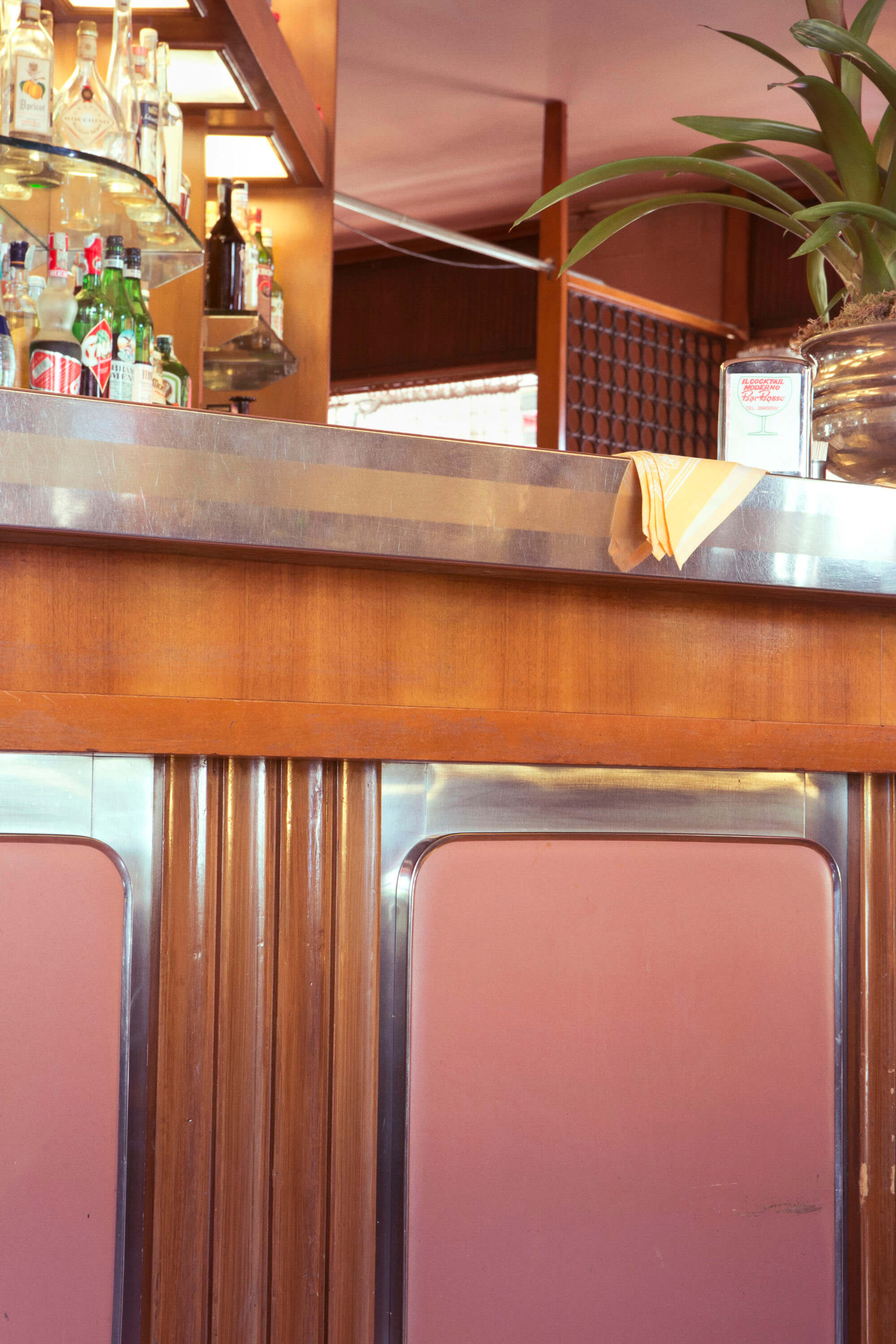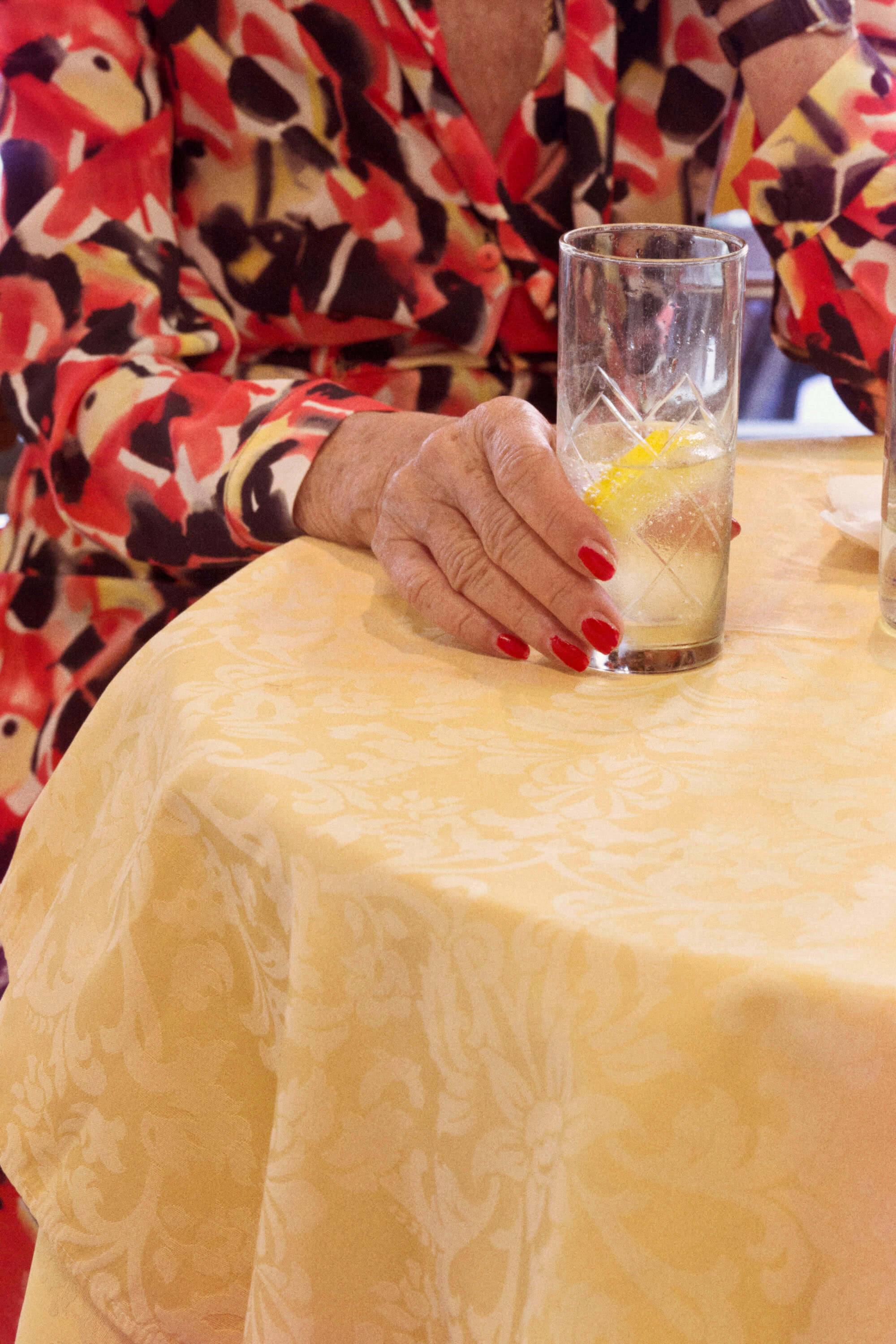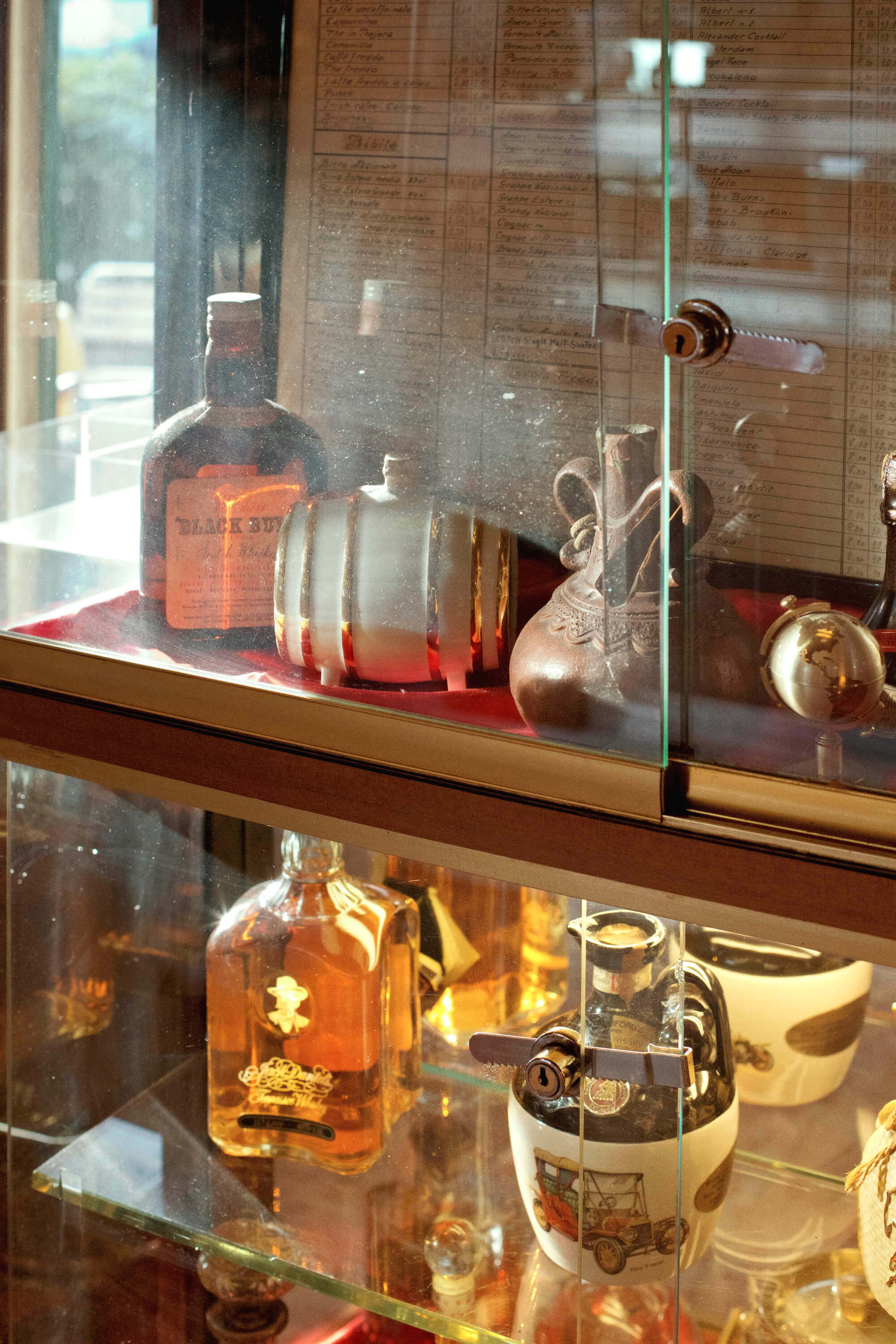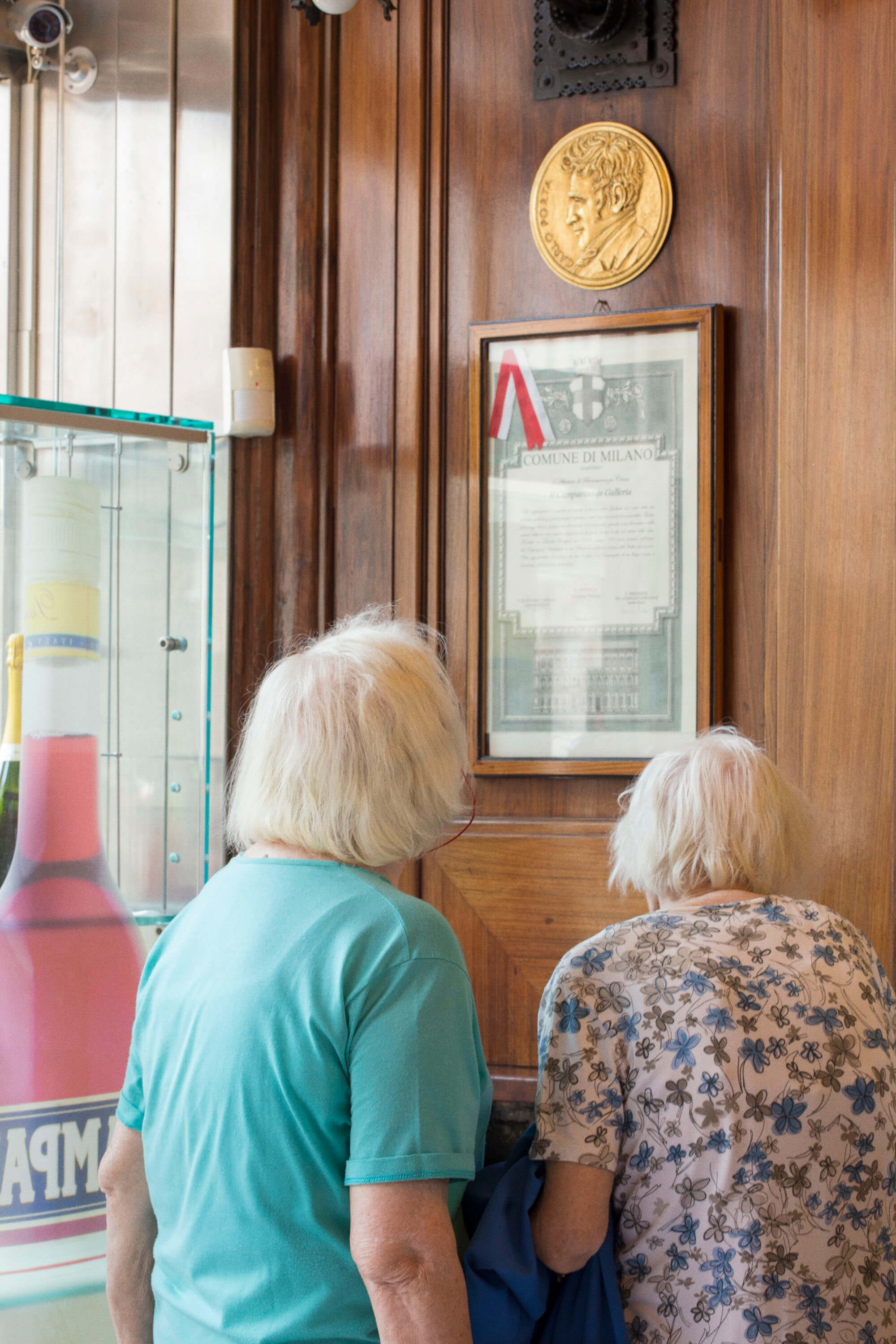
How Do You Say Aperitivo?
Milan has quite a good relationship with drinking, for several reasons. Industries like Branca (1845) or Campari (1862) still have their headquarters in the city and, even though the aperitivo ritual originates from Turin, it is in the shadow of Milan’s cathedral that the rite is most widespread and consecrated. Still in vogue, countering and at the same time underlining the city’s productive and hardworking imagine, for those who live in Milan the aperitivo seems to be the essential custom to follow to be defined a true Milanese. It tells of getting off from a hard day’s work but, very often, the bar becomes an extension of the studio or office, to talk shop in a more informal manner.
Like many others, the custom expresses and reflects the trends and attitudes of the city as a whole. The expression “Milano da Bere” was a synonym for winding down, the relaunch of the economy, the yuppie hedonism of the 1980s. People were starting to go out again and the wine of the political rallies was being replaced by Gin and Tonics or Long Island cocktails around varnished and smoked glass bar tops. The next decade, which began in 1992 with the Tangentopoli “Mani pulite” inquest right in Milan, before extending the length and breadth of the country, was characterized by the advent of the happy hour. In response to the economic crisis that was creeping around the city, tons of coloured flyers started to pop up, inviting you to drink half price between 6 and 9 pm.

The offer often included buffets overflowing with food, probably the leftovers from lunchtime in the same venues. A period that saw the rise of muddled cocktails like Mojitos or Caipiroskas with strawberry, together with an increase in food poisoning. As a reaction to this lowering of quality in favour of quantity (of drinks and customers), ten or so years later, in the warm-up to the current foodie craze, various bars opened in Milan where you could drink very well and find qualified and knowledgeable mixologists, experts who could do the whole range of alcoholic mixes, from the most traditional recipes to new signature drinks. Despite the immense rise in quality standards, many of these new venues seemed more for the bartenders to show off than for the patrons to quench their thirst.
Then there are – luckily, I’d add – a series of places where it is still possible to find excellent drinks, the right attention to customers, little savoury snacks so the drinks don’t go straight to your head, places where you can somehow feel a part of Milan’s human panorama. The ones I’m talking about are the so-called historic bars, the traditional bars that have not just kept the interiors and the crockery but also the manners and rituals of the Milanese aperitivo unchanged: the waiters in their uniforms, the sober tones, the empathy with the customers, the total lack of music, a good list of classic drinks and an innate ability to repeat the same gestures to prepare the drinks for decades. These bars are places where every type of passing trend has been observed from a disdainful distance. From this point of view, the historic bars very much reflect the face of Milan, outward-looking but still small and locally oriented all the same, simple and courteous but in some ways still a bit rigid, all-embracing and curious but nevertheless fond of its reassuring traditions.
Many of the bars I’m going to tell you about open in the morning to serve breakfast and also produce their own cakes, petite pâtisserie, panini and savoury snacks. The closing times vary, between 10 in the evening and 2 in the morning. However, our survey was always made between 6.30 and 8.30, concentrating on the aperitivo hour, the moment that takes us from the end of the day to the nightlife scene in that typically Milanese way.
Bar Basso
Very often, many features of what now seems traditional were innovative in their day. This is the case of Bar Basso. Established in 1947, thanks to the guidance of Mirko Stocchetto and then his son Maurizio, in 1967 it became one of the first bars in Milan to make cocktails according to the laws in international bars. Modernity, you know, does not just lie in making new inventions, but also in the ability to reinterpret history. And this attitude can be found in many of Bar Basso’s cocktails, above all the highly celebrated Negroni Sbagliato (“wrong” Negroni): Bitters, Vermouth Rosso and Prosecco. All contained in oversized ice-cream glasses cooled by a single block of ice instead of the classic small cubes, so as to cool the drink without making it too watery. The same for the Vodkatini con servizio, that is, served in small aluminium glasses in turn placed in a mini, single-dose ice bucket full of grated ice. The success it has had in the design world (and more recently the art world), every year during the Salone del Mobile pouring en masse onto the pavements in front, is thanks to James Irvine, British designer, but Milanese by adoption since the 1980s, who loved to round off his work meetings with Jasper Morrison or Mark Newson right here.

Camparino in Galleria
Art lovers and in particular fans of futurism will be well aware of the painting Rissa in Galleria by Umberto Boccioni, dated 1910. Looking between the crowd depicted in that picture you can make out the entrance to a bar. Five years later, that caffé, Gaspare Campari’s drinking hole, would move a few metres away and become the Camparino in Galleria. Still today it is a Milanese stronghold: even though it’s in Galleria Vittorio Emanuele II and offers a direct view of the cathedral, the numerous tourists gravitating in that area do not seem to be interested in its Liberty interiors. It is perhaps the reason why the cocktails at Camparino – above all the bitter shakerato – can still be savoured directly at the bar, accompanied by crunchy gherkins and the odd peanut, while perhaps contemplating the mosaics covering the high internal walls in total serenity.
Caffè Pasticceria Cucchi
Caffè Pasticceria Cucchi, or Cucchi, as many usually call this bar, was established in 1936. It is located on the corner between Corso Genova and Via De Amicis (south Milan), in an area that at the time was considered pretty much in the suburbs. In the early 1980s, legend has it the area was famous for the high number of muggers. All the same, Cucchi has always boasted excellent clientele, probably also thanks to the quality of what it has to offer. As well as excellent Martini Cocktails, served in a Martini glass with the shaker alongside to top it up, the Cucchi, the delicious mixture invented here in the 1940s: bitters, Biancosarti, Aperol, a dash of brandy and ice, all served in a low tumbler with the obligatory accompaniment of homemade toasted almonds. Today for its patrons it is a meeting point for both work and play. When the weather’s nice, if you go around the arc formed by the tables outside the bar at aperitivo you can recognize a good part of Milan’s – real or presumed – intelligentsia.
Gattullo Pasticceria
One of Milan’s main characteristics is its ability to welcome and embrace people and communities from various parts of Italy, and today the world. One of the most Milanese communities is the Apulians, which formed thanks to mass migration after the Second World War. Among the many migrants there was also Giuseppe Gattullo, who left Ruvo di Puglia to open a small pasticceria in 1961. Today, as well as the baker’s that continues to churn out the famed panettoni (an Apulian who produces the city’s symbolic cake!), you can also enjoy the excellent classic cocktails such as Negroni, Martini, Gin and Tonic, or put yourselves in the hands of a Domenichino, the alcoholic house mix whose recipe is still a secret today. Between the 1960s and 1980s, Gattullo was the place where everyone from the Milanese pre-theatre scene met, from Jannacci to Pozzetto, Toffolo to Gaber. All regular customers, many of whom left recipes for delicious sandwiches as a sign that they had passed through. If you stop by at aperitivo hour you can meet numerous professors from the nearby Università Bocconi speaking about the future of the world economy. However, the most interesting conversations are without doubt the ones you can have with Domenico, the bar’s welcoming owner and storyteller, who every day for fifty years has been spending his time entertaining customers and checking that the quality of the service remains as high as ever.

Pasticceria Cova
Since it was founded in 1817 at the crossroads between Via Manzoni and Via Verdi, one of Cova’s known characteristics was the high quality of the products and the furnishings, made of ash with Indian walnut inlay. Headquarters of the anti-Austrian resistance during the Five Days of Milan, it changed location owing to the 1943 bombing. Since 1950 Cova has been in Via Monte Napoleone, in the heart of the fashion district. As the only bar on the street, over the years there is no doubt that it has been the destination for anyone seeking refreshment after exhausting shopping trips, frequenting the numerous lawyers’ firms in the area, or, according to a famous rumour, for young gigolos waiting to make their name on the catwalk. Without doubt it is still the place to drink champagne and live certain luxuries in elegant simplicity.
Pasticceria Marchesi
Compared to other cities with a breathtaking and obvious beauty, Milan has often been described as a city to discover. This is especially true of the Corso Magenta zone, which is quintessential Milanese: rich but never excessively gaudy, sober and elegant, following Milan’s most distinct tradition. Established in 1824, Pasticceria Marchesi is right on Corso Magenta, on the corner of a warren of streets still tracing ancient Roman paths, and a few hundred metres from De Vinci’s Last Supper. While maintaining the original layout intact, Marchesi is striking even from the outside thanks to the glass and gold signs and the panelling framing the whole façade. Obviously the interiors are none the less beautiful. The most outstanding feature is the steel and brass bar which, solemn and a bit worn, is the ideal resting place to drink your bitters or vermouth aperitivo. Alone or in a group, the important thing is to maintain the same peaceful tones that have always characterized the venue and the neighbourhood as a whole.

